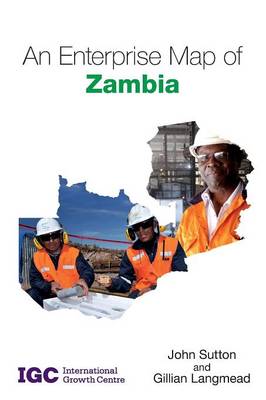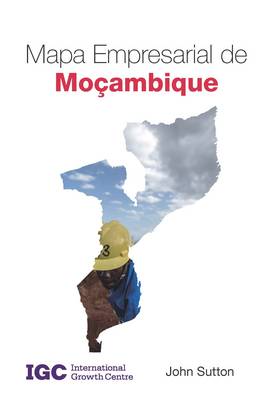Enterprise Map
1 primary work • 3 total works
Book 4
Over the first decade of the new millennium, Zambia's real GDP rose by 80%. Much of this rise came from the mining sector, but a substantial fraction came from the manufacturing sector, whose output rose by 50% in real terms over the decade. This volume provides a detailed account of Zambia's current industrial capabilities. From mining-related industries through general manufacturing, agribusiness and construction, it describes the structure of each of the country's major industries. It provides detailed profiles of fifty leading industrial companies that together represent the frontier of current capabilities in each area of activity. Along the way, it addresses key issues of current interest. * Where did the capabilities of Zambia's leading industrial companies come from? How many of these companies came from abroad? How many had their origins in the public sector? And how many were set up by domestic trading companies that began local manufacturing operations? * The copper industry generates three-quarters of Zambia's export earnings. But to what extent has Zambia developed downstream capabilities in the manufacture of copper products?
* How large a role is China playing in the flow of Foreign Direct Investment to Zambia? And in what industries are Chinese companies active? This is the fourth volume in John Sutton's "Enterprise Map" series, which profiles the industrial capabilities of selected countries in sub-Saharan Africa. Volumes on Ethiopia, Ghana and Tanzania have already appeared. The forthcoming fifth volume will be on Mozambique.
* How large a role is China playing in the flow of Foreign Direct Investment to Zambia? And in what industries are Chinese companies active? This is the fourth volume in John Sutton's "Enterprise Map" series, which profiles the industrial capabilities of selected countries in sub-Saharan Africa. Volumes on Ethiopia, Ghana and Tanzania have already appeared. The forthcoming fifth volume will be on Mozambique.
Mapa Empresarial oe Mocambique
by John Sutton, Adelino Jeque Pimpao, and Felix Simione
Published 3 June 2014
A economia mocambicana teve um crescimento rapido durante a primeira decada do milenio. O PIB real mais que dobrou e este crescimento foi distribuido por todos os setores: a producao industrial teve um cresimento mais rapido do que o PIB, tendo crescido por um fator de 2,3 ao longo da decada. A questao economica fundamental para Mocambique e se esta taxa de crescimento pode ser sustentada por mais uma decada. Para atingir este objectivo e necessario, entre outras coisas, que o setor industrial do pais tenha um avanco substancial. E oportuno, portanto, fazer algumas perguntas sobre a industria mocambicana. Quais sao as atuais capacidades industriais de Mocambique? Qual a origem desses recursos? Quais sao as perspectivas para a integracao das empresas locais na cadeia de valor da nova industria de gas offshore? Este volume apresenta a primeira visao geral do setor industrial de Mocambique, abrangendo producao, agro-negocio e construcao. Este descreve cada industria em detalhe e os perfis de empresas lideres, estabelecendo as suas capacidades actuais e a forma como estas foram desenvolvidas.
Este e o quinto volume da serie de John Sutton ' Enterprise Map', que descreve o perfil das capacidades industriais de paises seleccionados da Africa subsaariana. Volumes sobre a Etiopia, Gana, Tanzania e Zambia ja foram desenvolvidos.
Este e o quinto volume da serie de John Sutton ' Enterprise Map', que descreve o perfil das capacidades industriais de paises seleccionados da Africa subsaariana. Volumes sobre a Etiopia, Gana, Tanzania e Zambia ja foram desenvolvidos.
An Enterprise Map of Mozambique
by John Sutton, Adelino Jeque Pimpao, and Felix Simione
Published 3 June 2014
Mozambique's economy grew rapidly in the first decade of the millennium. Real GDP more than doubled, and this growth was widely spread across sectors: manufacturing output grew even faster than GDP, rising by a factor of 2.3 over the decade. A key economic question for Mozambique is whether this rate of growth can be sustained for another decade. Achieving this will require, among other things, a substantial advance in the country's industrial sector. It is timely, therefore, to ask some questions about Mozambiquan industry. What are Mozambique's current industrial capabilities? Where did these capabilities come from? What are the prospects for integrating local companies into the supply chain of the new offshore gas industry? This volume presents the first general overview of Mozambique's industrial sector, covering manufacturing, agri-business and construction. It describes each industry in detail, and profiles leading firms, setting out their current capabilities and the way in which these were developed. This is the fifth volume in John Sutton's 'Enterprise Map' series, which profiles the industrial capabilities of selected countries in sub-Saharan Africa.
Volumes on Ethiopia, Ghana, Tanzania and Zambia have already appeared.
Volumes on Ethiopia, Ghana, Tanzania and Zambia have already appeared.


